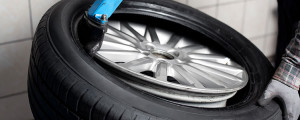Living in Minnesota, you will know how the climate and weather can affect your vehicle during the winter months. Even if it is cold weather with no snow, below 40 degrees Fahrenheit, the engine gets cold and can even freeze up after a night or two of freezing weather. Then to get the vehicle started in extreme cold, it has to be left running for five minutes to warm the engine, or the block could crack. Colder temperatures will also affect the whole car, including the tires. Temperatures that are mild, with only small fluctuations, do not typically cause concern about the tire pressure on a vehicle. When the temperature outside drops below 32 degrees Fahrenheit for a few days in a row, then you will notice a drop in the tire pressure, but there is no reason for concern. As along as you are aware that this occurs, you can accommodate by adding three or four pounds, psi, of air. You can also bring your vehicle in and we can inspect it for you. This can help provide you with a safe and reliable vehicle when you need to drive it.
Why the Tires are Affected by Cold Weather
There is a law in physics that explains this phenomenon and makes it more clear what is actually happening, and it is called Boyle’s Law. The Boyle’s Law states that when a gas is made cold, it takes up less volume, or the molecules shrink, and that makes the pressure drop. This can be demonstrated with a helium-filled balloon. After the balloon has been filled with helium, which is a gas, cold blast it, or put it in a freezer. The balloon completely collapses, but it is because the gas molecules shrunk, they are still in the balloon. When the balloon is brought back into the warmth, it immediately expands.
Tire Alignments should be Done
Having the tires aligned is an important task to perform. This is especially important if your vehicle is subjected to the cold. Any tire alignment should be done by a professional, so make sure to bring the vehicle in so we can inspect the tires for you. We can also inspect the air pressure in the tires of the vehicle. This will help the vehicle to operate efficiently as you drive in the winter
Checking the Air Pressure in the Tires
After looking at how cold temperatures and mild temperature changes can affect your vehicle and tires, extremely hot weather can have adverse affects on it too. After long running times in hot weather, tire pressure can expand, and it is typically the same in all tires unless there is a leak in one. The same way that the psi went down in freezing weather conditions, in hot weather, the gas molecules expand causing the already hot rubber to expand more. As the tires are expanding, the rubber is stretched thin and can pop if you are not careful.
